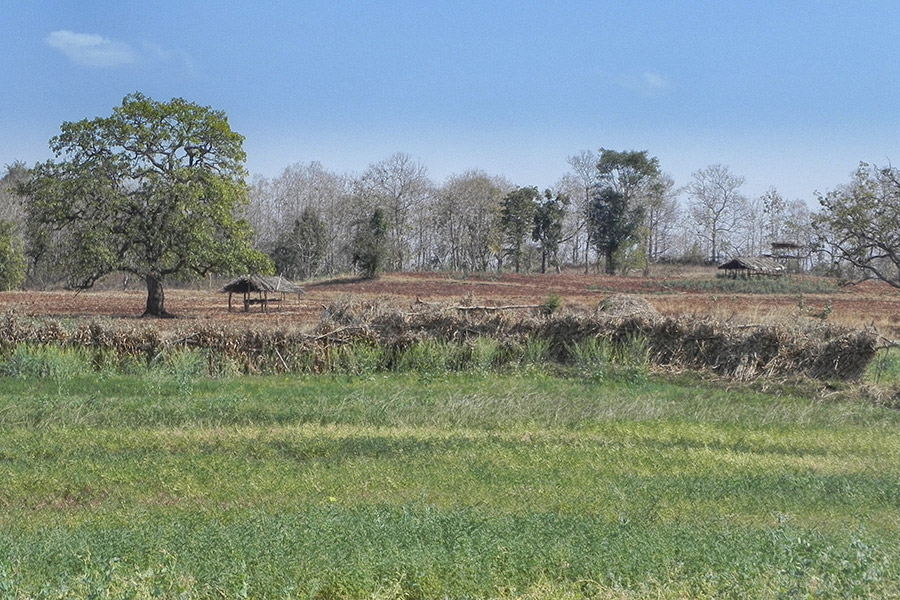For nearly five decades, Protected Areas (PAs) have been the cornerstones of India’s conservation success, contributing to the recovery and maintenance of endangered and threatened species. India’s PA network is, however, limited in its capacity due to challenges of spatial coverage, fragmentation, isolation, pressures from surrounding areas as well as its vulnerability to the demands of economic development. Concurrently, marginal farmers living on the periphery of PAs bear the losses associated with crop-raiding and livestock depredation by wild animals, while also navigating fluctuating weather patterns and minimal government support. Nature-based solutions, such as the adoption of agroforestry, have shown success in contributing to biodiversity conservation as well as rural livelihoods. Modifying land use, however, can result in lost incomes to farmers. Therefore, the effectiveness of any intervention is contingent on the willingness of farmers to participate. To address this, a new study undertaken by scientists from the University of Florida, University of Georgia, and Centre for Wildlife Studies, assessed the willingness of farmers to enroll in a voluntary incentive-based agroforestry program. The study was based in the buffer area of Pench Tiger Reserve in Madhya Pradesh.
Pench harbors some of the highest densities of carnivores, supported by a diverse assemblage of prey species. Pench also plays a critical role in maintaining the integrity of the central Indian landscape which consists of 16 PAs and 35 corridors. The buffer region of Pench is a heterogeneous landscape with multi-use reserved forests and nearly 55,000 acres of land under agriculture, with dominant crops being wheat, rice, maize, sugarcane, pulses, and oilseeds.
The study surveyed 602 private landowners and presented different program options to them with varying proportions of land to be enrolled, the duration of enrolment, and the incentive amount. The objective of the study was to determine the various factors that influence landowner preferences, including the design of the program itself, demographic and economic factors, as well as psychological variables.
An overwhelming majority of 88% were interested in at least one of the programs that were offered. Only 12% of respondents rejected all the offered agroforestry programs. This 12% of respondents wanted to continue their current agricultural activities and avoid risks associated with land use change, considered the incentive amount to be insufficient, perceived their land to be unsuitable for agroforestry, or believed that it would increase conflict with wildlife.
The study found program design to be an important driver of landowner willingness. As one would expect, respondents were more likely to adopt agroforestry as the payment per acre per year for enrolment increased. Respondents were less likely to enroll in agroforestry as the amount of land to be enrolled increased and the duration of enrolment increased. However, there was heterogeneity in these preferences, implying that there were respondents who wanted to commit a larger percentage of their land and for a longer duration. For example, respondents with lower agricultural incomes preferred to enroll for a longer program duration. Larger land enrolment was preferred by respondents with high school education, higher agricultural incomes, small families, prior experience of crop-raiding by herbivores, and high forest cover surrounding their landholding. Since landowners are under-compensated for losses due to crop raiding in India and often absorb the financial losses themselves, a program that provides incentives to adopt agroforestry was therefore financially attractive to respondents. The study estimated that landowners would have to be paid approximately Rs. 66,000 per acre per year of enrolment as an incentive amount to switch to agroforestry.
While monetary incentives are necessary, the study found that it is not a sufficient condition for the uptake of agroforestry programs. Psychological variables such as perceived benefits, social norms, and risk perception also influenced landowner willingness. Capacity building through knowledge-sharing and skill development would be important in addressing landowners’ concerns about the viability of any conservation interventions.
India’s conservation policy has largely ignored the need for a complementary strategy of land sharing in a human-dominated landscape. Private landowners present a huge opportunity towards realizing this. These areas could supplement the role of existing PAs and provide opportunities for creating stepping-stones and maintaining connectivity for wide-ranging species. Collaborating with landowners could also ensure their participation in conservation decision-making, while at the same time possibly alleviating some of the stresses from the ongoing agrarian crisis in India. The authors acknowledge that given India’s complex ground realities, there are several questions regarding implementation that would need to be addressed as well. But the study is an attempt towards assessing the feasibility of alternate models of community buy-in and livelihood conscious conservation efforts that have so far been limited in India.
Citation: Puri, M., Pienaar E.F., Karanth, K.K., Loiselle, B.A. (2021) Food for thought: Examining farmers’ willingness to engage in conservation stewardship around a protected area in central India. Ecology and Society, 26(2): 46. https://doi.org/10.5751/ES-12544-260246


 CI is a non-profit, non-commercial portal that aims to facilitate wildlife and nature conservation by providing reliable information and the tools needed to campaign effectively.
CI is a non-profit, non-commercial portal that aims to facilitate wildlife and nature conservation by providing reliable information and the tools needed to campaign effectively.


